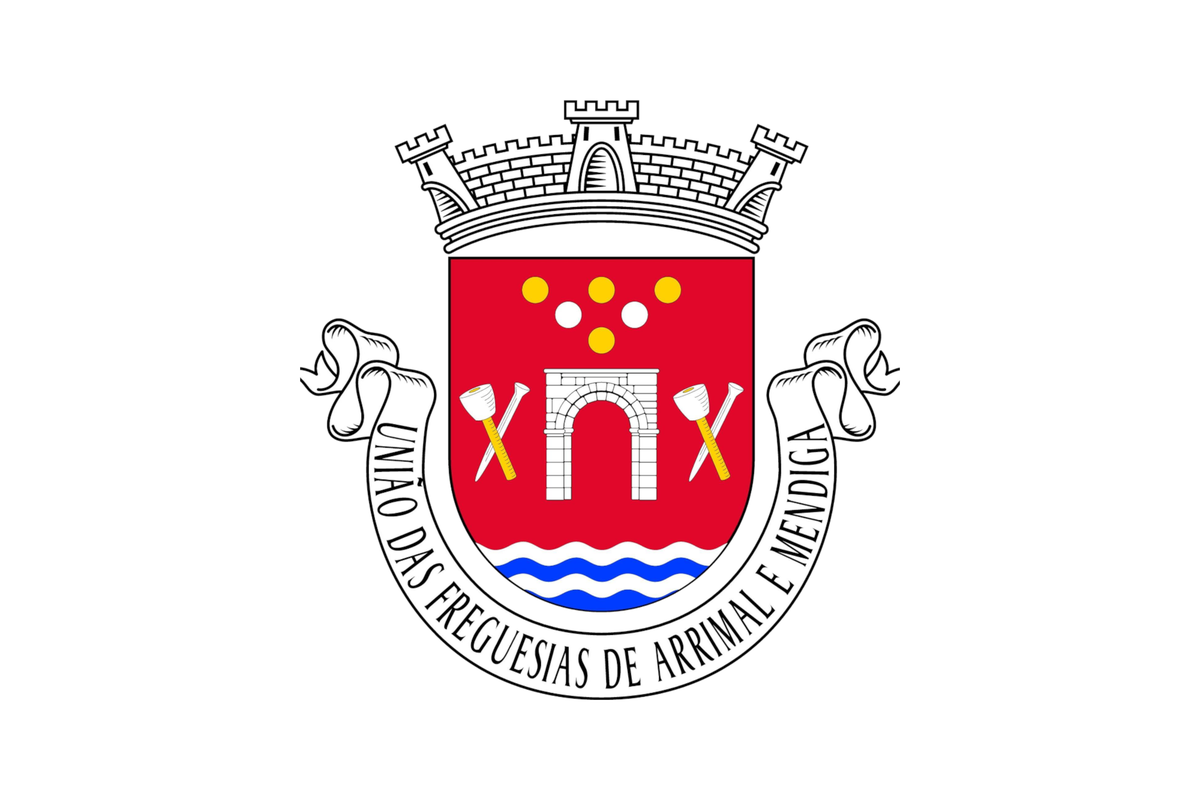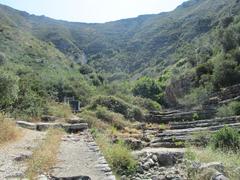
Visiting Arco da Memória: History, Tips, and Visitor Information
Date: 01/08/2024
Introduction
Nestled in the picturesque village of Amiais de Baixo, Portugal, the Arco da Memória stands as a testament to the region’s rich medieval history and cultural heritage. This historical monument, believed to have been constructed during the 12th century, marks a significant period in Portuguese history—the Christian Reconquista. During this time, King Afonso I, the first King of Portugal, granted the lands around the Arco da Memória to the Monastery of Alcobaça. The Cistercian monks of the monastery played a pivotal role in the agricultural and economic development of the region, introducing advanced farming techniques that contributed to its prosperity (source).
The Arco da Memória is an exquisite example of Romanesque architecture, featuring semi-circular arches and intricate carvings that have weathered centuries. Its decorative elements, including motifs of flora, fauna, and religious symbols, reflect the artistic sensibilities of the period and the craftsmanship of the Cistercian monks. Beyond its architectural beauty, the arch holds immense cultural value, symbolizing the historical events that shaped the region and the enduring legacy of the Cistercian order (source).
For modern-day visitors, the Arco da Memória offers a unique glimpse into Portugal’s medieval past. Open year-round and free to visit, this monument is not only a historical treasure but also a focal point for local folklore and traditions. With guided tours, scenic hiking trails, and nearby attractions such as the Grutas de Mira D’Aire and Castelo de Alcanede, a visit to Arco da Memória promises to be both educational and enriching (source).
Table of Contents
- Introduction
- Historical Background
- Architectural Features
- Cultural Significance
- Visiting Hours and Tickets
- Preservation Efforts
- Visitor Tips
- Nearby Attractions
- FAQ
- Conclusion
- References
Historical Background
Arco da Memória, located near Amiais de Baixo in Portugal, is a historical monument with deep roots in the region’s medieval past. The arch is believed to have been constructed in the 12th century, during the reign of King Afonso I, the first King of Portugal. This period was marked by the Christian Reconquista, a series of campaigns by Christian states to recapture territory from the Moors, who had occupied much of the Iberian Peninsula.
The arch served as a boundary marker, delineating the lands granted to the Monastery of Alcobaça by King Afonso I. The monastery, founded in 1153, played a crucial role in the agricultural and economic development of the region. The lands around the Arco da Memória were part of the extensive estates managed by the Cistercian monks, who introduced advanced farming techniques and contributed to the prosperity of the area.
Architectural Features
The Arco da Memória is a fine example of Romanesque architecture, characterized by its semi-circular arches and robust construction. The arch is made of local limestone, a material commonly used in the region due to its abundance and durability. The structure stands approximately 4 meters high and 3 meters wide, with intricate carvings that have weathered the centuries.
One of the most striking features of the arch is its decorative elements, which include motifs of flora and fauna, as well as religious symbols. These carvings not only enhance the aesthetic appeal of the monument but also provide insights into the artistic sensibilities of the period. The craftsmanship reflects the influence of the Cistercian monks, who were known for their skills in various forms of art and architecture.
Cultural Significance
The Arco da Memória holds significant cultural value for the local community and the broader Portuguese heritage. It stands as a testament to the historical events that shaped the region and the enduring legacy of the Cistercian monks. The arch is a symbol of the medieval past, representing the struggles and triumphs of the Reconquista and the subsequent development of the area.
In addition to its historical importance, the Arco da Memória is also a site of local folklore and traditions. According to legend, the arch marks the spot where King Afonso I rested during his campaigns against the Moors. This story, passed down through generations, adds a layer of myth and mystique to the monument, making it a focal point for cultural narratives and community identity.
Visiting Hours and Tickets
The Arco da Memória is open to visitors year-round, with no admission fee. However, guided tours are available upon request for those who seek a deeper understanding of the monument’s history and significance. These tours are conducted by knowledgeable guides who share fascinating stories and insights about the arch and its place in Portuguese heritage.
Preservation Efforts
Over the years, various efforts have been made to preserve and protect the Arco da Memória. The monument is listed as a site of public interest by the Portuguese government, ensuring that it receives the necessary attention and resources for its maintenance. Conservation projects have focused on stabilizing the structure, cleaning the stonework, and preventing further deterioration caused by environmental factors.
Local organizations and heritage groups play a crucial role in these preservation efforts. They organize events and educational programs to raise awareness about the historical and cultural significance of the arch. These initiatives not only help in safeguarding the monument but also foster a sense of pride and ownership among the local community.
Visitor Tips
For those planning to visit the Arco da Memória, there are several practical tips to ensure a memorable experience. The site is accessible by car, with parking available nearby. Visitors can also reach the arch by hiking or biking, as the surrounding area offers scenic trails and routes. It is advisable to wear comfortable footwear and carry water, especially during the warmer months.
The best time to visit is during the spring and autumn, when the weather is mild and the landscape is at its most picturesque. Early morning or late afternoon visits are recommended to avoid the midday heat and to enjoy the site in a more tranquil setting.
Photography enthusiasts will find plenty of opportunities to capture the beauty of the Arco da Memória and its surroundings. The interplay of light and shadow on the stone carvings creates stunning visual effects, particularly during the golden hours of sunrise and sunset.
Nearby Attractions
Visitors to the Arco da Memória can also explore other attractions in the vicinity. The nearby town of Amiais de Baixo offers a glimpse into traditional Portuguese life, with its charming streets, local markets, and friendly residents. The town is known for its culinary delights, including regional specialties such as ‘bacalhau’ (salted cod) and ‘pastéis de nata’ (custard tarts).
For those interested in outdoor activities, the area around Amiais de Baixo is a haven for nature lovers. The Grutas de Mira D’Aire (Limestone Caves) are a must-visit, offering guided tours through a fascinating underground world of stalactites and stalagmites. The caves are part of a larger karst system that has been shaped by natural processes over millions of years.
Another notable site is the Castelo de Alcanede, a medieval castle located in the parish of Alcanede. The castle, perched on a hilltop, provides panoramic views of the surrounding countryside and offers a glimpse into the region’s feudal past. Visitors can explore the ruins, learn about the castle’s history, and enjoy the scenic vistas.
FAQ
What are the visiting hours for Arco da Memória?
The Arco da Memória is accessible year-round, and there is no admission fee. Guided tours are available upon request.
Are there tickets required to visit Arco da Memória?
No tickets are required as the site is free to visit. However, guided tours may have a fee.
What are the best times to visit Arco da Memória?
Spring and autumn are the best times to visit due to the mild weather and picturesque landscape. Early mornings and late afternoons are recommended to avoid the midday heat.
Are there guided tours available at Arco da Memória?
Yes, guided tours are available upon request, providing deeper insights into the monument’s history and significance.
Conclusion
In conclusion, the Arco da Memória is a remarkable historical monument that offers a unique window into Portugal’s medieval past. Its architectural beauty, cultural significance, and the surrounding natural landscape make it a must-visit destination for history enthusiasts, cultural explorers, and nature lovers alike. Plan your visit today and experience the rich heritage of Amiais de Baixo. For more information and to stay updated on special events and activities, visit the official tourism website or contact the local tourist office in Amiais de Baixo.
References
- Komoot. (n.d.). Attractions Around Amiais de Baixo. https://www.komoot.com/guide/2532824/attractions-around-amiais-de-baixo
- Casa da Amieira. (n.d.). Casa da Amieira. https://www.casadaamieira.com
- Rede Expressos. (n.d.). Rede Expressos Bus Services. https://www.rede-expressos.pt/en
- Follow the Camino. (n.d.). Caminho de Fátima. https://followthecamino.com/en/camino-tours/caminho-de-fatima/
- CP - Comboios de Portugal. (n.d.). Train Schedules. https://www.cp.pt/passageiros/en


